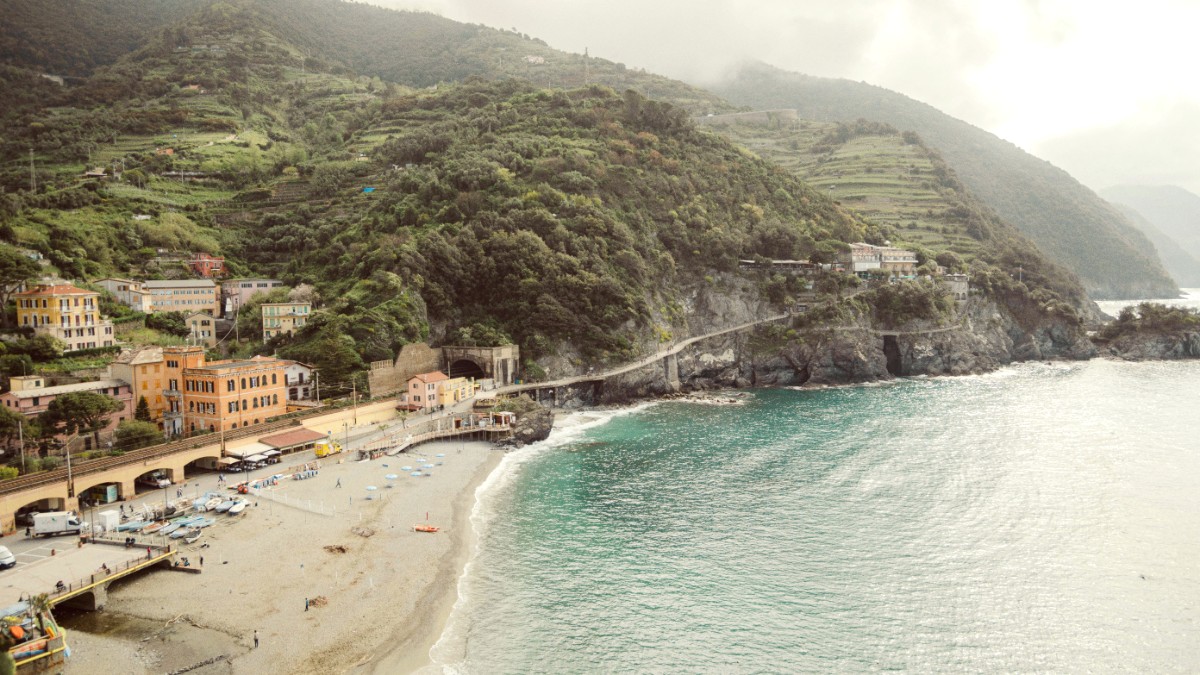
Italy
Monterosso al Mare is a distinctive position within the Cinque Terre, often called the "Five Lands." It is the largest and westernmost of these five cherished villages, located in Italy’s Liguria region. This placement on the rugged coastline of the Italian Riviera lends Monterosso an unique character. Find it nestled amidst steep cliffs, terraced vineyards, and small, protected harbors.
Monterosso's natural harbor offers haven for local fishing boats and functions as a departure point for ferries that connect the villages. Clear waters invite swimming and snorkeling during warmer months.
Visitors often remark on the distinct scent of lemon blossoms, a characteristic aroma of the village, especially in spring. This natural bounty, from the sea to the hills, defines Monterosso's geographical identity. Its position also makes it a convenient starting point for exploring the entire Cinque Terre network, as it is the first village encountered when arriving from the north via train or road.
Monterosso al Mare’s history stretches back to ancient times, with roots in the Roman Empire. The first documented mention of the settlement dates to 1201, offering a glimpse into its long past. During the Middle Ages, the village, like its neighbors, faced constant threats from pirate raids. To counter these attacks, extensive fortifications were built. Today, you still observe remnants of these defensive structures, including surviving towers and sections of walls. These historic fortifications, like the Aurora Tower, are silent reminders of a time when coastal communities needed protection from sea-borne dangers.
In the 13th century, Monterosso, along with the other Cinque Terre villages, became part of the powerful Republic of Genoa. This period marked a time of relative stability and growth, facilitating the local economy’s flourish. The region’s economy historically relied on three main pillars: fishing, olive cultivation, and viticulture. Olive trees, a resilient crop, dotted the hillsides, yielding the precious Ligurian olive oil. Viticulture, however, most shaped the landscape. Unique terraced vineyards, carved into steep slopes by hand over centuries, permitted grape cultivation despite challenging terrain. These terraces, supported by dry stone walls, represent more than agricultural features; they are a monument to human labor and adaptation. They prevented erosion and created arable land where none naturally existed, shaping the landscape into its iconic form. Local wines, though produced in smaller quantities, gained appreciation for their distinct character.
The Cinque Terre, Portovenere, and the Islands (Palmaria, Tino and Tinetto) received UNESCO World Heritage Site designation in 1997. This recognition acknowledges the area’s outstanding universal value.
The UNESCO status celebrates the cultural landscape formed by human activity and its harmonious integration with the natural beauty of the coastline. This designation preserves the unique architectural heritage, the terraced agriculture, and the natural environment for future generations.
The designation underscores the importance of the dry stone walls. They hold the soil and support the vineyards, preventing erosion and maintaining the delicate ecosystem.
This status also means the area gains international recognition, drawing a global audience.
The historical resilience of Monterosso’s inhabitants in adapting to and shaping their challenging environment defines a aspect of its identity.
Their legacy appears visible in every stone wall, every fishing boat, and every terraced field. The village maintains a strong connection to its past, even as it functions as a leading tourist destination.
Search for remnants of old castles and towers in the old town. They hint at Monterosso’s medieval defenses against pirates.
The blend of ancient traditions and modern life fabricates a rich cultural experience for visitors.
The UNESCO World Heritage Site designation ensures the unique architectural heritage, terraced agriculture, and natural environment are preserved for future generations.
This snapshot provides a quick introduction, laying the groundwork for a detailed exploration of Monterosso and its surrounding wonders.
Approximately 1,400 residents (2023). This number fluctuates dramatically with seasonal visitors.
Italian is the official and everyday language. Many tourism workers speak some English.
Central European Time (CET) / Central European Summer Time (CEST).
The Euro (€) is the official currency. ATMs are available, and credit cards find wide acceptance in most hotels and larger restaurants. Smaller shops or cafes may prefer cash.